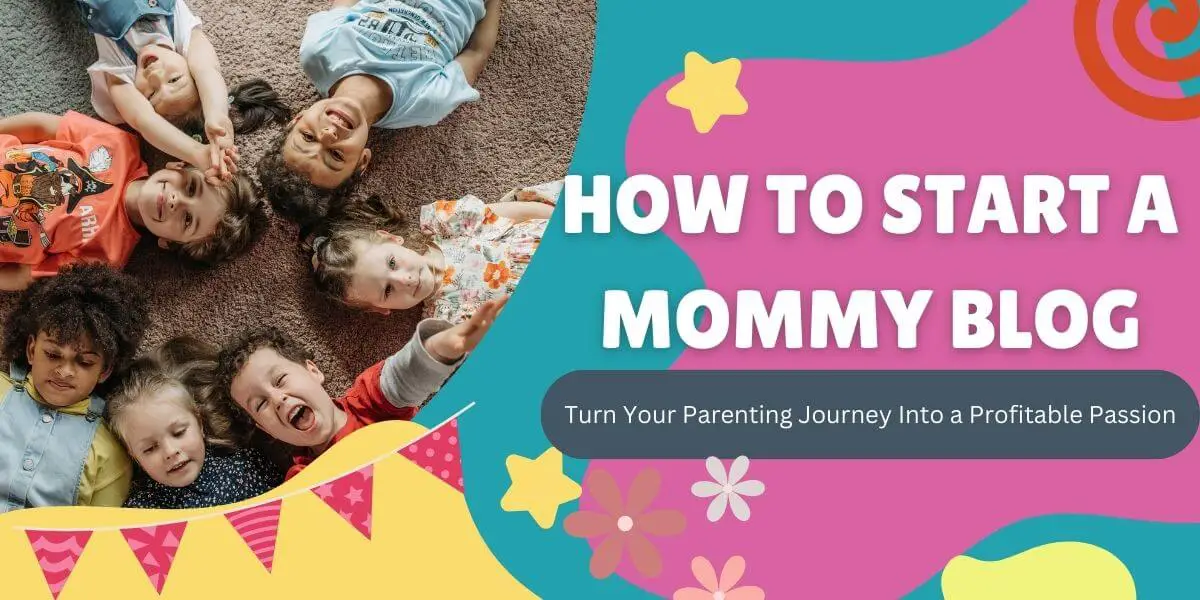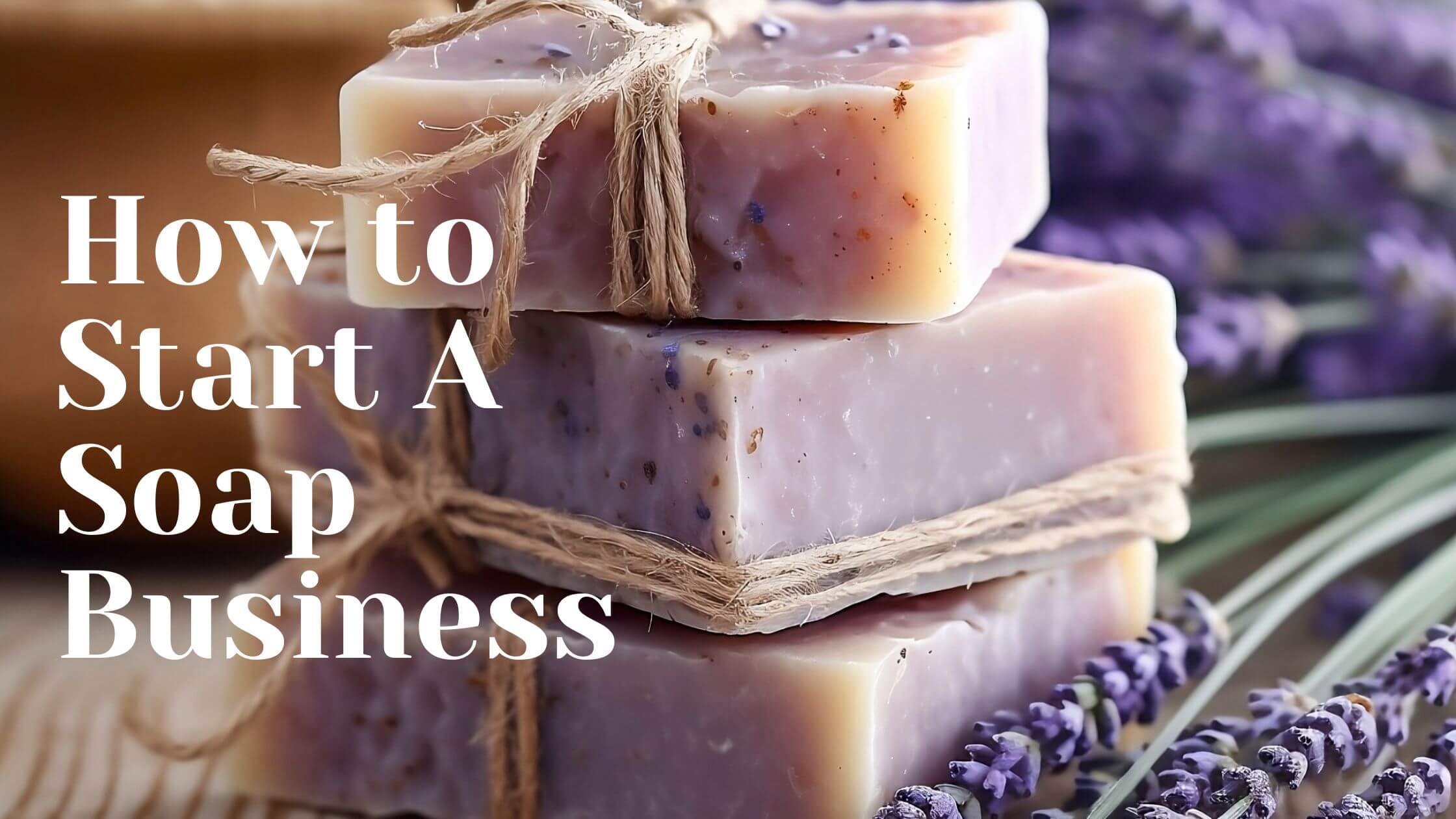Starting a mommy blog is more than just a fun hobby—it’s an incredible way to share your parenting journey, connect with like-minded moms, and even turn your passion into a profitable venture. Over the past decade, mommy blogs have exploded in popularity, offering real, relatable advice and stories from parents all over the world. Whether you’re navigating the ups and downs of motherhood, exploring family-friendly activities, or dishing out tips on balancing work and family life, your experiences are valuable.
So, why start a mommy blog? Not only can it serve as a personal outlet for your thoughts and experiences, but it also has the potential to build a supportive community and create lasting relationships. Beyond that, many successful mommy bloggers have turned their blogs into a source of income through brand partnerships, sponsored content, and affiliate marketing.
Whether you’re looking to share the joy (and occasional chaos) of motherhood or hoping to carve out a profitable online presence, starting a mommy blog offers endless opportunities. Let’s dive into how you can turn your parenting stories into something meaningful and rewarding!
Benefits of Starting a Mommy Blog
Starting a mommy blog can bring a wide range of benefits that go beyond simply sharing your experiences. Here are some compelling reasons to consider starting your own:
1. Personal Expression and Reflection
Blogging allows you to document your motherhood journey, share your thoughts, and reflect on both the challenges and joys of parenting. It can serve as a creative outlet where you express your unique perspective on motherhood.

2. Building a Supportive Community
Through your blog, you can connect with other moms who relate to your experiences. This creates a supportive community where you can share advice, tips, and encouragement. It can foster meaningful relationships with moms from different parts of the world who share similar struggles or interests.
3. Helping Others
By sharing your parenting tips, hacks, and lessons learned, you can help other moms navigate the complexities of motherhood. Your blog can become a valuable resource for others seeking guidance on anything from baby sleep schedules to balancing work and family life.
4. Monetary Opportunities
Many mommy bloggers are able to monetize their blogs through various means, such as affiliate marketing, sponsored posts, and others. A successfull mommy blogger can earn $5,000 to $10,000 or more. So, you can take it as a business.
5. Personal Growth
Blogging often involves learning new skills like content creation, SEO, social media marketing, and even website management. These skills can be invaluable and offer opportunities for personal development and even career growth. Additionally, you can gather lots of latest knowledge about parenting that will help to take care of your children more carefully.
6. Flexible Schedule
One of the greatest perks of running a mommy blog is the flexibility. You set your own schedule, work from home, and manage your time around family life. This makes it an ideal venture for moms who want to earn money while staying at home with their children.
7. Brand Collaborations and Freebies
As your blog grows, you may have opportunities to collaborate with brands, receive free products for review, or attend exclusive events. These partnerships can add value and fun to your blogging experience.
8. Documenting Your Parenting Journey
A mommy blog can serve as a digital scrapbook of your parenting journey. Years from now, you’ll be able to look back and reflect on all the milestones, memories, and challenges you’ve overcome as a mother.
A Step-by-Step Guide on How To Start a Mommy Blog
Starting a mommy blog can feel overwhelming, but with the right steps, it becomes an exciting and manageable process. Whether you’re a tech-savvy mom or completely new to blogging, this step-by-step guide will walk you through everything you need to know.
1. Find Your Niche
Choosing the right niche is one of the most important decisions you’ll make when starting a mommy blog. While it may be tempting to write about everything under the sun, narrowing your focus will help you connect with a specific audience more effectively. The beauty of the mommy blogging world is that there are many niches to choose from, and each one offers its own unique opportunities.
To begin, think about your passions, experiences, and the topics you enjoy talking about the most. Are you deeply involved in homeschooling your kids? Perhaps you’re navigating the challenges of being a working mom or dealing with the particular struggles of raising children as a single parent. Maybe you love cooking family-friendly meals or have a knack for finding creative ways to organize your home. These are all potential niches that can set your blog apart from the sea of general parenting blogs.

Another key aspect to consider is your audience. Who do you want to reach with your blog? Understanding the challenges, interests, and needs of your target readers will help you tailor your content. If your niche resonates with a specific group of people, it becomes much easier to create engaging, relevant content that speaks directly to them. Focusing on a niche also makes it easier for brands and sponsors to identify you as a partner when looking for collaborations.
Remember, you don’t have to pick a niche that feels restrictive. Your niche can be broad enough to allow flexibility, but it should still provide some clarity about the kind of content your readers can expect. Ultimately, picking the right niche allows you to showcase your unique voice and perspective in the crowded world of mommy blogging, helping you stand out and grow an engaged audience.
Starting a mommy blog with a narrower focus can help you stand out and attract a dedicated audience. Here are 10 popular and specific topics within the mommy blog niche:
1. Pregnancy and Postpartum Journey
Share tips, experiences, and advice on pregnancy health, postpartum recovery, and newborn care. This can include product recommendations for new moms, breastfeeding tips, or postpartum mental health support.
2. Baby and Toddler Development
Focus on early childhood development, including milestones, sleep schedules, feeding routines, and toddler behavior management. This is a great niche for new and expecting moms looking for guidance.
3. Homeschooling and Educational Activities
With more parents exploring homeschooling, this topic can provide lesson plans, educational resources, and creative learning activities for children of different age groups.
4. Meal Planning and Family-Friendly Recipes
Moms are always on the lookout for easy, healthy, and kid-approved recipes. You can focus on meal planning, time-saving kitchen hacks, and family-friendly meal prep ideas.
5. Minimalist Parenting and Decluttering
Help moms simplify their lives by providing tips on minimalism, organizing, and decluttering their homes. Share advice on how to manage a busy household with fewer possessions and more meaningful activities.
6. Mommy Self-Care and Wellness
Many moms struggle with finding time for self-care. This topic could include fitness routines, mental health strategies, skincare, and beauty tips, as well as general wellness advice for busy moms.
7. Working Moms and Career Advice
Provide support for working moms, covering topics like work-life balance, time management, productivity hacks, and childcare options. You can also share career tips, side hustle ideas, or ways to succeed in remote work.
8. Family Travel and Vacation Tips
If your family loves traveling, focus on family-friendly travel tips, vacation planning, and how to travel with kids of different ages. Offer destination guides, packing lists, and reviews of family-friendly hotels and attractions.
9. Budgeting and Saving for Families
Help families manage their finances with advice on budgeting, saving for college, frugal living, and money-saving tips on everything from groceries to family outings.
10. Parenting Special Needs Children
This niche focuses on providing resources, tips, and personal experiences for parents of children with special needs. It’s a highly supportive community where you can share advice on therapies, school systems, and emotional support.
2. Choose the Right Blogging Platform
Once you’ve identified your desired niche, the next step is choosing a blogging platform. A blogging platform is where you’ll create, manage, and publish your blog content. With so many options available, it’s important to select one that meets your needs, technical skills, and long-term goals.
One of the most popular and versatile platforms is WordPress.org. It offers endless customization options and plugins that allow you to fully control the look, functionality, and features of your blog. WordPress.org also gives you the freedom to monetize your blog in a variety of ways, such as through ads, affiliate links, or selling products. However, it does require purchasing hosting and a domain name, and there’s a bit of a learning curve involved. But, once you get the hang of it, the possibilities are vast.
If you’re looking for a simpler option, you might consider platforms like Blogger, Wix, or Squarespace. Blogger is a free platform that’s easy to set up and use, making it a popular choice for beginner bloggers. However, it offers fewer customization options, and you don’t have as much control over your content as with WordPress. Wix and Squarespace, on the other hand, are paid platforms that provide drag-and-drop interfaces and user-friendly design features. They are ideal if you prefer an all-in-one solution without worrying too much about the technical side of blogging.
When choosing a platform, think about your long-term vision for your blog. If you plan to turn your mommy blog into a business and eventually monetize it, investing in a self-hosted WordPress blog is likely the best route. It offers the scalability and flexibility you’ll need as your blog grows. If your goal is more casual and focused on sharing personal stories, a simpler platform like Blogger might be sufficient.
Ultimately, the right platform depends on how much control you want over your blog’s appearance and functionality, your technical skills, and your budget. Take some time to explore the options before committing, and choose the one that feels most aligned with your goals and blogging vision.
3. Create a Memorable Blog Name and Brand
One of the most exciting steps in starting a mommy blog is coming up with your blog’s name and building its brand. Your blog name will become your identity in the blogging world, so it’s important to choose something memorable, relatable, and reflective of your niche. A great blog name not only attracts readers but also gives them an idea of what your blog is about right from the start.
When brainstorming names, try to keep it simple and easy to spell. The best blog names are often creative yet straightforward, making them easy for your readers to remember and search for online. Think about using words that relate to your niche or the core themes of your blog. For example, if your blog focuses on motherhood and wellness, you might want to incorporate those themes into your name. Additionally, consider a name that gives you flexibility as your blog evolves. Avoid something too limiting that could pigeonhole your content in the future.
Once you’ve settled on a blog name, the next step is building your brand. Your brand is more than just your name; it’s the overall feel and experience of your blog. This includes your logo, color scheme, fonts, and even the tone of your writing. The goal is to create a cohesive and professional look that reflects your personality and resonates with your audience.
Start by designing a logo that represents your blog’s identity.
You can hire a graphic designer, use an online logo generator, or create one yourself if you have design skills. Your logo will appear on your blog, social media, and any other promotional materials, so make sure it’s something you’re happy with long-term.
Next, choose a color scheme that complements your blog’s tone and niche. Soft pastels might be perfect for a parenting blog focused on newborn care, while brighter, bolder colors might work well for a blog with a more playful or energetic vibe. Consistency is key—your colors and fonts should be used throughout your blog to create a unified and polished look.
Finally, your brand extends to the way you communicate with your audience. Whether your tone is friendly, authoritative, humorous, or heartfelt, consistency in your writing style helps readers connect with you and feel like they know who you are. Together, your blog name, design, and voice form the foundation of a strong, memorable brand that will set you apart from other mommy bloggers.
4. Set Up Your Blog
Now that you’ve chosen your blog name and developed your brand, it’s time to set up the technical side of things. While this may seem daunting, breaking it down step by step will make it manageable. The first thing you’ll need to do is purchase a domain name and set up hosting.
Your domain name is essentially your blog’s web address, and hosting is where your blog’s files and content will be stored. Many hosting providers, such as Bluehost or SiteGround, offer affordable packages that include both domain registration and hosting, making the process simple.

Once you’ve registered your domain and chosen a hosting provider, the next step is to install your blogging platform. If you’re using WordPress, most hosting providers offer a one-click installation process. After installing WordPress (or another platform of your choice), you can begin customizing your blog’s appearance.
One of the first things you’ll do is select a theme, which is the layout and design of your blog. WordPress, for example, offers thousands of free and premium themes that cater to different blogging styles. Choose a theme that complements your brand and provides the functionality you need. For a mommy blog, you might want a theme that allows for easy navigation, clean layouts, and space for images or videos.
Once your theme is installed, it’s time to customize it. This includes adding your logo, choosing your color scheme, and adjusting the layout to suit your content. Many themes allow you to easily change the appearance of your site without needing coding knowledge. Take your time to get everything looking just the way you want—this is your blog’s storefront, and it’s important to make a good first impression.
Next, you’ll want to install some essential plugins to enhance your blog’s functionality. For instance, SEO plugins like Yoast can help you optimize your content for search engines, while social sharing plugins make it easy for readers to share your posts on social media. Security plugins are also a must to protect your blog from hackers, and backup plugins ensure that your blog’s content is regularly saved in case of any technical issues.
Finally, don’t forget to set up important pages like your “About” page, which gives readers insight into who you are and what your blog is about, and a “Contact” page to allow brands or readers to reach out to you. Once everything is set up, take a moment to review your blog’s functionality, ensuring all the links work and the design looks clean and professional.
With your blog officially up and running, you’re ready to start creating and publishing content, but the foundation you’ve built will ensure that your blog looks great and functions smoothly for both you and your readers.
5. Develop Engaging Content
Creating engaging content is at the heart of any successful mommy blog. Once your blog is set up, it’s time to start writing posts that will attract, inform, and inspire your readers. The key to producing content that resonates with your audience is to focus on their needs and interests while maintaining your authentic voice.
Start by thinking about the topics that excite you and align with your niche. Whether it’s parenting tips, product reviews, personal stories, or how-to guides, your content should reflect your passion for the subject matter. For a mommy blog, posts often range from practical advice on motherhood (like sleep schedules and potty training) to personal experiences (sharing your birth story or your journey through postpartum depression). Your goal is to offer value to your readers, whether by providing helpful information, emotional support, or relatable humor.
One effective way to keep your content fresh and engaging is to plan a variety of post formats. You can alternate between long-form, in-depth articles, and shorter, bite-sized tips or lists. Including tutorials, DIY projects, and product reviews are also great ways to diversify your content and keep readers coming back for more. The use of personal anecdotes can make your blog more relatable, allowing readers to see you as a real mom with real challenges and triumphs.
A crucial part of engaging content is consistency. Readers like to know when to expect new posts, so it’s helpful to create a content calendar. This can be as simple as setting a goal to publish one post per week or as detailed as mapping out content ideas for the entire month. This not only keeps you organized but also helps you stay accountable to your readers.
Visual content is another powerful tool for creating engaging posts. Photos of your kids, family outings, or even the products you’re reviewing can add personality and depth to your blog.
High-quality images or videos can capture your readers’ attention and make your posts more appealing. For tutorials or DIY projects, step-by-step photos can be particularly effective in helping readers follow along.
Finally, engage with your audience by encouraging comments, questions, and discussions on your posts. When readers comment, respond thoughtfully to show you value their input. This interaction builds a sense of community around your blog, which is especially important in the mommy blogging world, where readers are often looking for connection and support.
Overall, engaging content is about being authentic, offering value, and consistently providing material that speaks to the hearts and minds of your readers.
6. Build Your Audience
Once you’ve created a few solid posts, the next step is to build your audience. Growing a loyal readership takes time and effort, but it’s essential if you want your blog to thrive. There are several strategies you can use to attract readers and encourage them to return to your blog regularly.
Social media is one of the most effective tools for promoting your blog and reaching a larger audience. Platforms like Instagram, Facebook, and Pinterest are particularly popular among moms, making them ideal for sharing your blog content. You can start by creating social media profiles for your blog and posting regularly to promote new blog posts, share behind-the-scenes moments from your life, and engage with followers. Instagram is great for visual storytelling, while Pinterest can drive significant traffic through visually appealing pins that link directly to your blog posts.
You can post Instagram stories to increase your social media presence.

In addition to social media, networking with other bloggers can help you build your audience. Collaborating with other mommy bloggers through guest posts, interviews, or blog collaborations can introduce you to their readers and give you credibility within the blogging community. Leave thoughtful comments on other blogs and participate in blogging groups or forums to increase your visibility and connect with others in your niche.
Another important audience-building tool is email marketing. By collecting email addresses from your readers, you can create an email list and send newsletters or updates whenever you publish a new post. This is a more personal way to keep your readers engaged and coming back for more. You can encourage readers to sign up by offering a freebie, such as a downloadable parenting guide or meal plan, in exchange for their email.
SEO (Search Engine Optimization) is a long-term strategy that helps your blog appear in search results when people are looking for topics related to your niche. By optimizing your blog posts with relevant keywords, you can increase your chances of attracting organic traffic from search engines like Google. Tools like Yoast SEO can help you ensure that your blog posts are optimized for search engines, making it easier for new readers to discover your content.
It’s also important to engage with your existing audience to keep them coming back. Reply to comments on your blog and social media, ask your readers for their opinions or suggestions, and make them feel like they’re part of your community. The more interaction you create, the more loyal your audience will become.
In time, as you consistently produce quality content and actively promote your blog, your audience will grow, and your blog will become a trusted resource for moms looking for advice, support, or simply a place to feel understood. Building an audience is a gradual process, but with dedication, your mommy blog can become a thriving community of readers who appreciate your unique voice and perspective.
7. Monetize Your Blog
Monetizing your mommy blog is an exciting step that can transform your passion into a profitable venture. While not every blogger sets out to earn money, many find that once they build a loyal audience, the opportunities for revenue generation naturally follow. There are various ways to monetize your blog, and the right approach depends on your goals, audience size, and content type.
One of the most popular methods of monetization is affiliate marketing. This involves promoting products or services that you personally use and recommend and earning a commission for every purchase made through your affiliate links. For example, you could write a blog post about baby products you love, including affiliate links to those items. When your readers click on those links and make a purchase, you earn a percentage of the sale. To get started, you can join affiliate programs such as Amazon Associates, which offers a wide range of products that fit almost any mommy blog niche.
This is the most critical part also. In this stage, you will get lots of offer from the unpopular brands with high commission rate. If you choose brand based on only high commission, you will be bised. Then your audience will get wrong information from you. Then your audience will lose trust on you and you will lose your audience as well as your business. So, you should be honest and be expert about what you choose for your blog.
Another common way to earn money through your blog is through sponsored posts. As your blog gains traction, brands may reach out to you for paid collaborations. These partnerships typically involve you creating content that promotes a brand’s products or services in exchange for compensation. Sponsored posts can range from product reviews to mentions in blog articles or social media shoutouts. It’s important to only work with brands that align with your values and resonate with your audience, ensuring authenticity and trust with your readers.
Ad revenue is another option for monetizing your blog. Once you have a steady flow of traffic, you can place ads on your blog and earn money each time a visitor clicks on or views the ads. Google AdSense is a popular ad network that’s easy to implement, or you can join more premium ad networks such as Mediavine once your blog grows. However, keep in mind that ads can affect user experience, so it’s important to find a balance between generating revenue and maintaining a clean, user-friendly blog design.
Many mommy bloggers also monetize their sites by creating and selling their own products or services. You might create ebooks, printable resources, or online courses that offer valuable information to your audience. For instance, if your blog focuses on meal planning for busy moms, you could sell meal plan templates or recipe ebooks. Digital products are especially appealing because they can be created once and sold repeatedly, offering a scalable source of income.
Finally, another revenue stream is offering paid membership or premium content. Some bloggers set up membership options, where readers pay a monthly fee for access to exclusive content, resources, or a private community. This is an effective way to build a loyal audience while generating recurring revenue.
Monetizing a mommy blog takes time and effort, but with consistent content creation and audience growth, the potential to generate income is significant. It’s important to strike a balance between offering free, valuable content to your readers and finding monetization strategies that fit your brand and blog goals.
8. Stay Consistent and Patient
Starting and growing a successful mommy blog requires consistency and patience. Blogging is not an overnight success story but rather a long-term commitment that involves steady effort. Once your blog is set up, it’s crucial to maintain a regular posting schedule to keep your readers engaged and attract new visitors. Consistency shows your audience that you’re dedicated to providing valuable content and builds trust over time.
Creating a content calendar can help you stay organized and plan your posts in advance. This ensures that you’re never scrambling for ideas or missing deadlines. Consistency in your content also extends to social media, where regular updates keep your followers engaged and encourage them to visit your blog. Whether you’re posting weekly, bi-weekly, or monthly, the key is to stick to a schedule that’s manageable for you.
Patience is equally important. Growing a blog takes time, and it’s normal for traffic to build slowly in the beginning. You might write several posts before you see significant engagement, but persistence pays off. Stay focused on providing value to your readers, and don’t get discouraged if progress seems slow. Blogging success often comes down to playing the long game—gradually building an audience, learning from what works (and what doesn’t), and continually improving your content and strategy.
In addition to patience with your blog’s growth, it’s important to be patient with yourself. As a mom, you likely have a lot on your plate, and blogging should complement your life, not add extra stress. There will be times when life gets busy, and you may need to take breaks or scale back. Give yourself grace during those times and remember that building a blog is a marathon, not a sprint.
Engaging with your readers is another aspect of consistency that helps build a loyal audience. Responding to comments, emails, or social media messages regularly fosters a sense of community and makes your readers feel valued. The more interactive and present you are, the more connected your readers will feel, encouraging them to return to your blog.
Finally, don’t hesitate to evaluate and adjust your strategy as you go. Pay attention to what types of content resonate most with your readers, which posts generate the most traffic, and where your blog could improve. Consistency and patience, paired with a willingness to adapt, will ensure your mommy blog grows steadily and becomes a meaningful platform for both you and your readers. With time, persistence, and dedication, you’ll begin to see the fruits of your labor.
Conclusion
Starting a mommy blog is a rewarding journey that allows you to share your experiences, connect with other parents, and even create a source of income. From developing engaging content to building a loyal audience, each step you take brings you closer to establishing a platform that reflects your unique voice and perspective.
As you embark on this adventure, remember the importance of authenticity. Your readers will appreciate your honesty and vulnerability as you navigate the ups and downs of motherhood. This genuine connection is what keeps them coming back for more.
Monetization can be an exciting aspect of blogging, but it’s essential to maintain the integrity of your content and ensure that any partnerships or products you promote align with your values. By focusing on quality over quantity and prioritizing your audience’s needs, you’ll foster a thriving community where both you and your readers can grow and learn together.
Stay consistent and patient throughout this process. The blogging world can sometimes feel overwhelming, especially with the plethora of advice and strategies available. Trust in your journey, adapt when necessary, and don’t hesitate to seek support from fellow bloggers and your audience.
In the end, a mommy blog is more than just a platform for sharing advice; it’s a space to celebrate the joys and challenges of motherhood, connect with others, and make your mark in the blogging community. So take that leap, write your heart out, and watch as your blog blossoms into a vibrant, supportive hub for moms everywhere. Your voice matters, and the world is waiting to hear your story.







